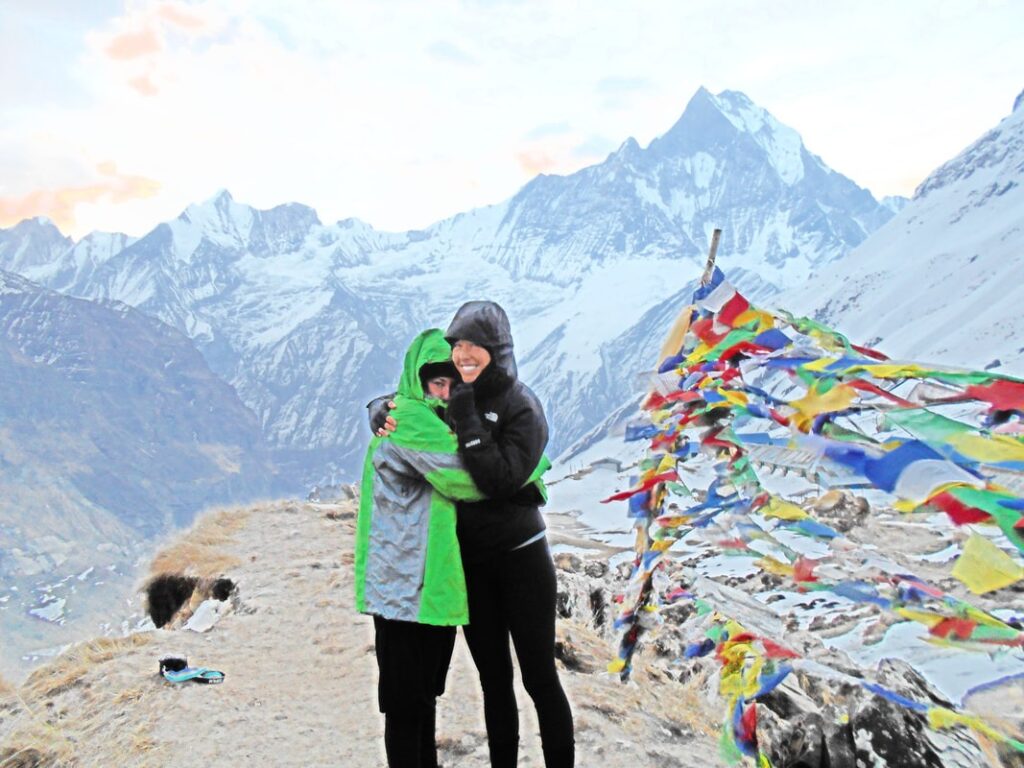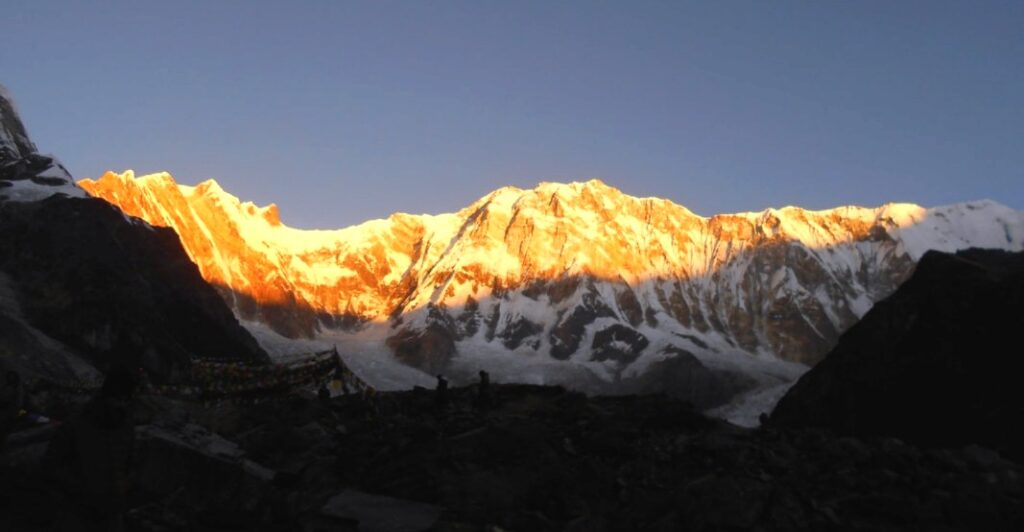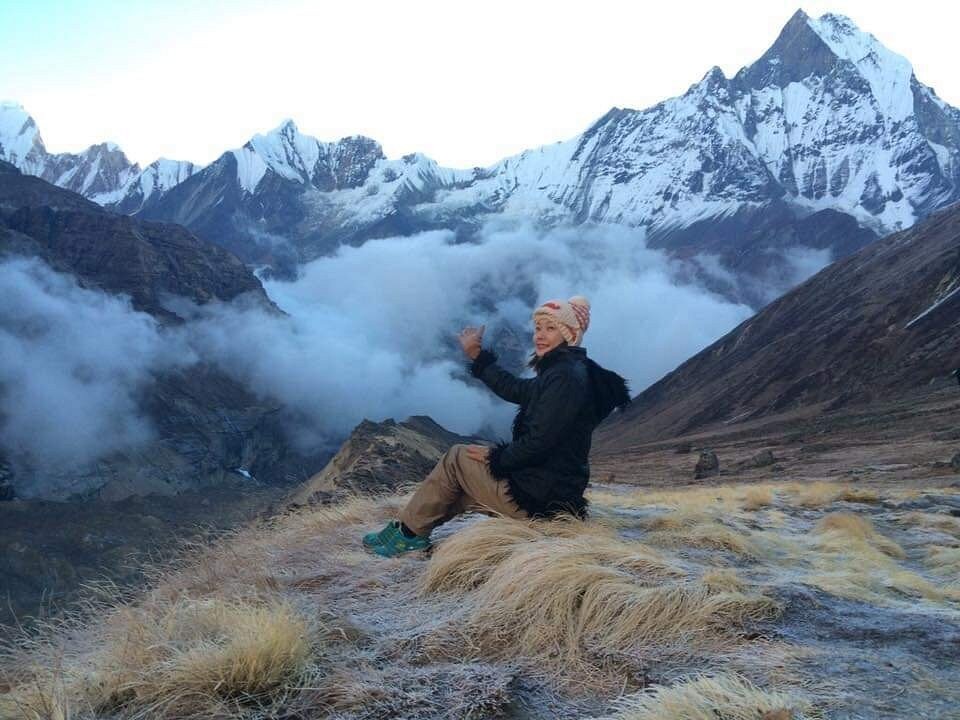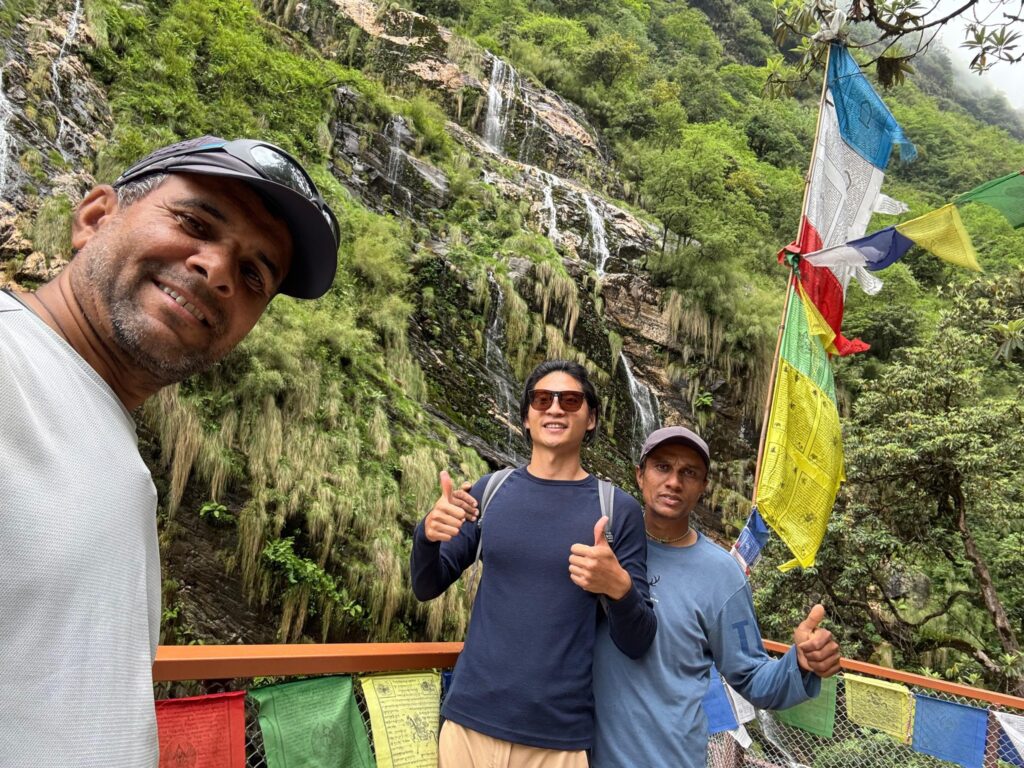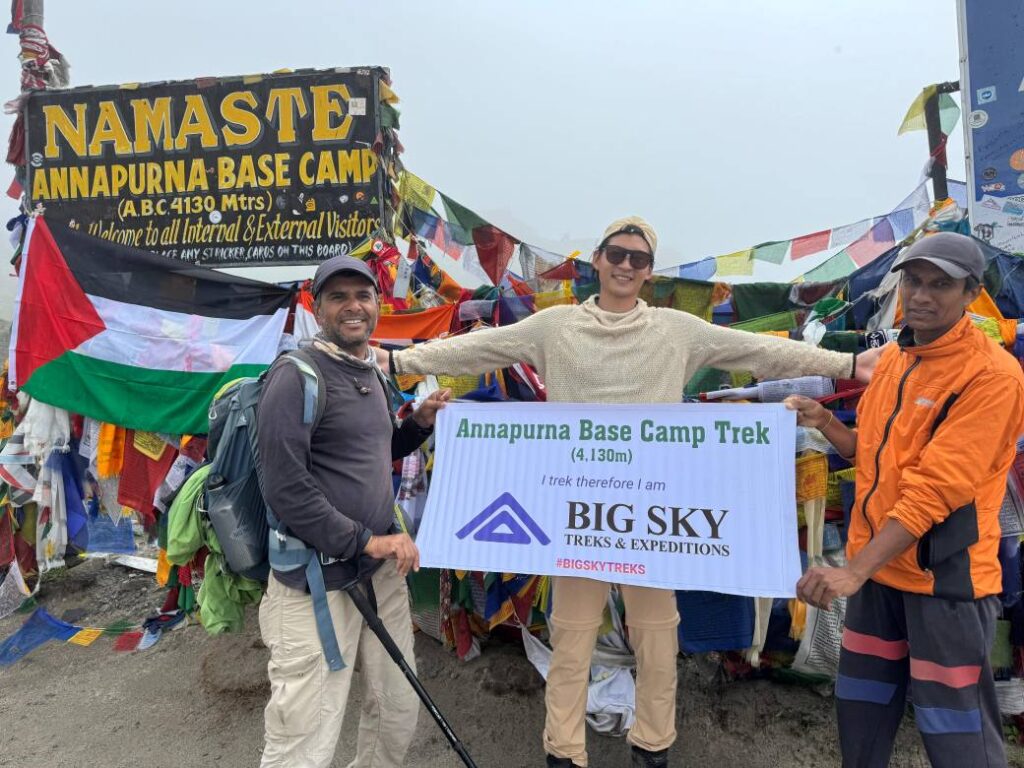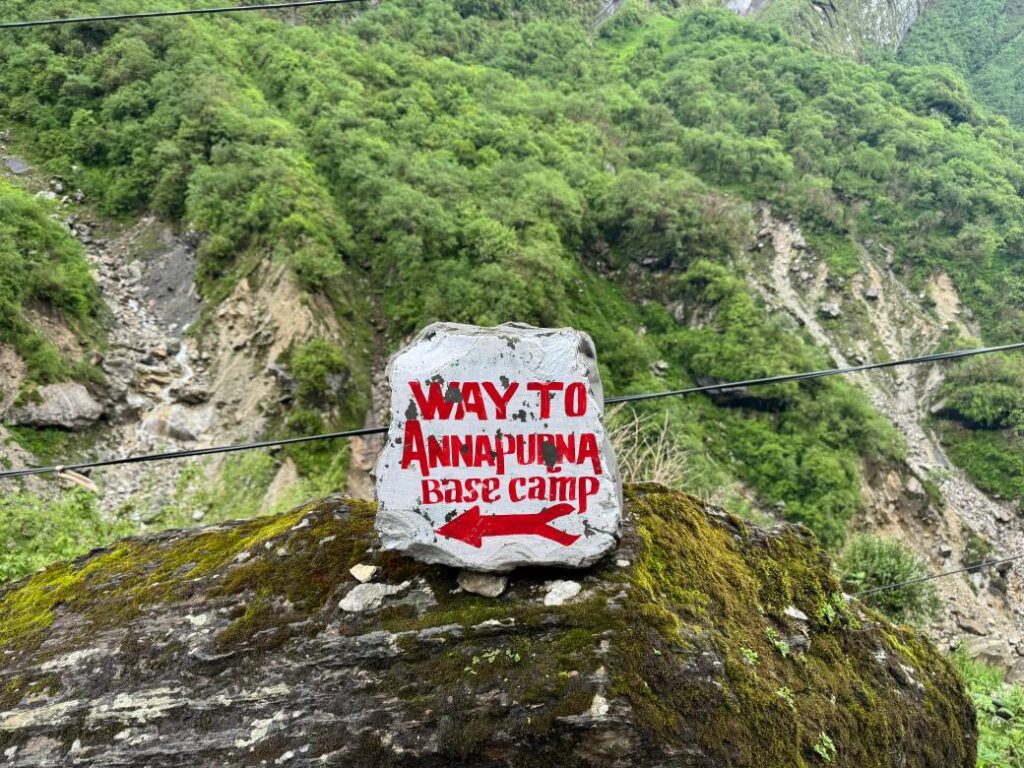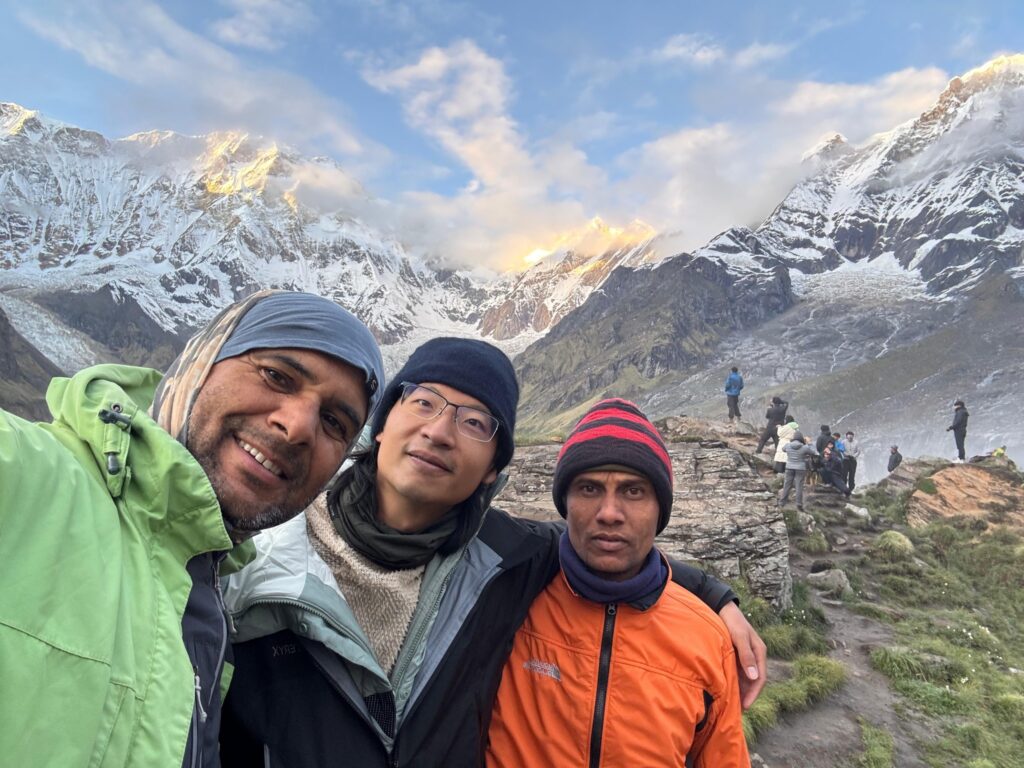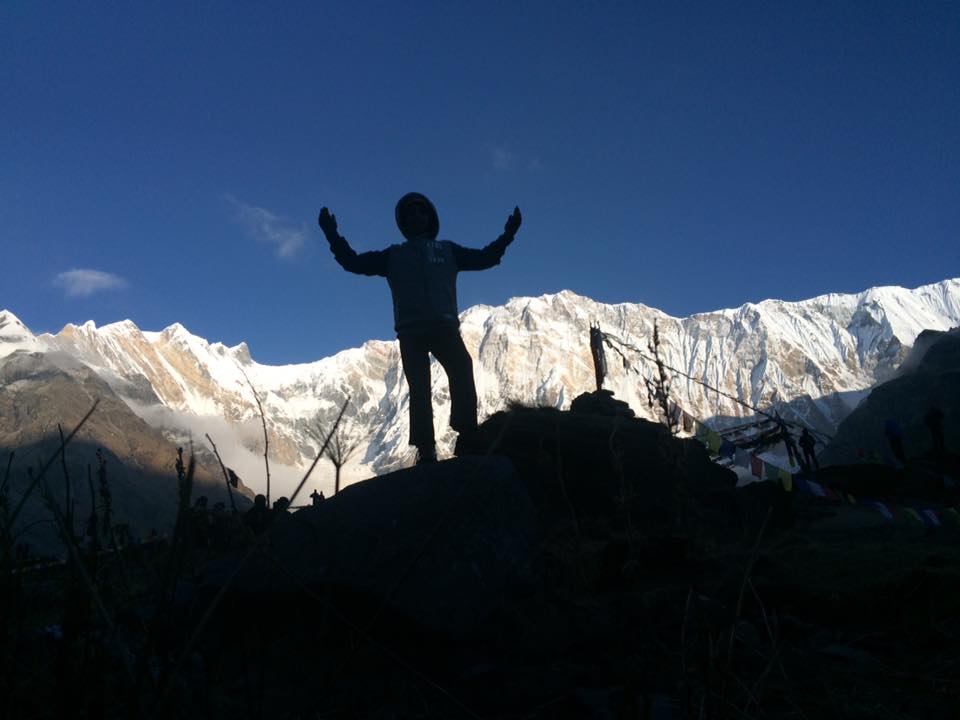The 15 days Annapurna Base Camp trek is a transformative journey that weaves together the raw beauty of Nepal’s Annapurna region, the warmth of its people, and the thrill of standing at 4,130 meters, surrounded by some of the world’s most majestic peaks. This trek is not just a physical endeavor but a deep dive into the heart of the Himalayas, offering moments of reflection, cultural discovery, and unparalleled natural splendor. With an extra day to explore Kathmandu’s cultural treasures, this itinerary provides a balanced pace for trekkers seeking both adventure and immersion. Below is the itinerary, followed by a fresh perspective on what makes this trek a life-changing experience.
Itinerary for the 15 Days Annapurna Base Camp Trek
- Day 1: Arrival in Nepal and Transfer to Hotel
- Day 2: City Tour and Trek Preparation
- Day 3: Drive or Flight to Pokhara (800m) (200kms – 7Hrs drive or 30min flight)
- Day 4: Drive from Pokhara to Nayapul and trek to Ulleri (1950m) (42 Kms, 1½ drive and 6 Hrs 11km walk)
- Day 5: Trek from Ulleri to Ghorepani (2850m) (8Km, 5 Hrs)
- Day 6: Trek from Ghorepani to Tadapani (2600m) early morning Poon Hill (3210m) (10Km, 6Hrs)
- Day 7: Trek from Tadapani to Chhomrong (2170m) (10Km, 6Hrs)
- Day 8: Trek from Chhomrong to Bamboo (2310m) (8Km, 5Hrs)
- Day 9: Trek from Bamboo to Deurali (3,200m) (9Km, 6Hrs)
- Day 10: Trek from Deurali to Annapurna Base Camp (ABC) (4130m) (6Km, 5Hrs)
- Day 11: Trek from Annapurna Base Camp (ABC) to Bamboo (15Km, 7Hrs)
- Day 12: Trek from Bamboo to Jhinu Danda (1,600m) Bath in natural hot spring (10Km, 6Hrs)
- Day 13: Trek from Jhinu Danda to Nayapul and drive back to Pokhara (10Km, 6Hrs walk and 42Km 1½ drive)
- Day 14: Drive or Flight from Pokhara to Kathmandu or Lumbini (200kms –7Hrs drive or 30min flight)
- Day 15: Departure from Nepal or follow your Next trip
The Allure of the Annapurna Base Camp Trek
The 15 days Annapurna Base Camp trek is a pilgrimage for those drawn to the call of the mountains. It’s a journey that tests your endurance while rewarding you with vistas of snow-draped peaks, vibrant valleys, and serene villages. The extra day in Kathmandu sets this itinerary apart, offering a chance to connect with Nepal’s rich heritage before stepping into the wild. This trek is a tapestry of contrasts—bustling cities give way to quiet trails, and modern comforts fade into the simplicity of teahouse life. It’s a chance to disconnect from the world and reconnect with yourself.
Starting in Kathmandu: A Cultural Prelude
Your adventure begins in Kathmandu, a city that feels like a living museum. The extra day for a city tour is a gift, allowing you to explore UNESCO World Heritage Sites like Swayambhunath (the Monkey Temple), where prayer flags flutter against a backdrop of city sprawl, or Pashupatinath, a sacred Hindu temple alive with rituals. Wandering through Durbar Square, you’ll marvel at ancient palaces and intricately carved wooden architecture, each telling stories of Nepal’s royal past. This day also serves a practical purpose: securing permits (ACAP and TIMS), finalizing gear, and meeting your guide or porter. The energy of Kathmandu primes you for the tranquility of the trail.
The Transition to Pokhara
The journey to Pokhara, whether by a scenic 7-hour drive or a quick 30-minute flight, feels like crossing into another world. Pokhara’s calm, with its shimmering Phewa Lake and distant views of Machapuchare’s fishtail peak, is the perfect launchpad for your trek. Spend the evening strolling along Lakeside, where cafes buzz with trekkers sharing stories of their Himalayan dreams. The anticipation builds as you prepare to leave urban life behind and step into the mountains.
The Trail: A Symphony of Landscapes
The trek begins in Nayapul, a bustling trailhead where the air hums with excitement. The first day’s trek to Ulleri is a baptism by fire—stone steps climb relentlessly, testing your legs and resolve. But the reward is immediate: sweeping views of terraced hills and the distant outline of Annapurna South. As you settle into a teahouse in Ulleri, the simplicity of a hot meal and a warm bed feels like luxury.
The path to Ghorepani winds through enchanted forests of rhododendron and oak, where sunlight filters through the canopy, casting dappled patterns on the trail. Ghorepani itself is a vibrant stop, its colorful teahouses a hub for trekkers. The pre-dawn hike to Poon Hill is a must, where the sunrise transforms the Annapurna and Dhaulagiri ranges into a glowing masterpiece. Standing at 3,210 meters, you’ll feel the world pause as the first light hits the peaks.
From Tadapani to Chhomrong, the trail dips and rises through landscapes that shift from lush greenery to rugged cliffs. Chhomrong, perched on a hillside, offers a glimpse into Gurung life, with stone houses and prayer flags fluttering in the breeze. The descent to Bamboo and ascent to Deurali mark a transition into wilder terrain, where waterfalls tumble down sheer rock faces and the air grows crisp. The final push to Annapurna Base Camp is a surreal experience. Crossing the Machapuchare Base Camp, you enter the Annapurna Sanctuary, a natural amphitheater where peaks like Annapurna I and Hiunchuli tower above you. At ABC, the silence is profound, broken only by the occasional crack of a distant avalanche.
The descent retraces familiar paths, but the perspective feels different. The hot springs at Jhinu Danda are a highlight, offering a chance to soak weary muscles while reflecting on the journey. By the time you reach Nayapul and drive back to Pokhara, the trek has woven itself into your story—a tale of resilience, wonder, and connection.
The Human Element
What sets the 15 days Annapurna Base Camp trek apart is its human heart. The trail is dotted with villages where Gurung and Magar families welcome you with genuine warmth. In Chhomrong, you might share a cup of chiya (Nepali tea) with a teahouse owner who recounts tales of the mountains. In Bamboo, children giggle as they chase each other through narrow paths, their joy infectious. These interactions, fleeting yet profound, remind you that the Himalayas are not just a destination but a home to resilient communities.
Guides and porters play a pivotal role, too. A guide’s knowledge of the terrain and local customs adds depth to the experience, while porters, often carrying heavy loads with ease, inspire respect for their strength and humility. Engaging with them—learning a few Nepali phrases or sharing a laugh—creates memories as vivid as the landscapes.
Navigating Challenges
The 15 days Annapurna Base Camp trek is moderate but not without challenges. The altitude at ABC (4,130m) requires careful acclimatization, and the itinerary’s gradual ascent helps mitigate risks. Still, hydration and a slow pace are crucial to avoid altitude sickness. The trails can be steep, with long ascents (like Ulleri’s steps) and descents (like the return to Bamboo) that demand stamina. Weather is another factor—spring and autumn are ideal, but sudden rain or fog can make paths slippery. Packing versatile gear, from waterproof jackets to sturdy boots, is essential.
Mental fortitude is just as important. Days of walking can feel repetitive, and fatigue may test your resolve. Yet, the camaraderie of the trail—shared smiles with strangers, encouragement from your group—keeps you going. The promise of each day’s new vista, whether a hidden waterfall or a glimpse of Machapuchare, fuels your momentum.
The Spiritual Dimension
The Himalayas have long been a place of spiritual seeking, and the 15 days Annapurna Base Camp trek taps into this legacy. The mountains feel alive, their presence both humbling and uplifting. At Annapurna Base Camp, surrounded by peaks that have inspired climbers and pilgrims for centuries, you may find yourself reflecting on life’s bigger questions. The Buddhist stupas and prayer wheels along the trail, especially in villages like Chhomrong, invite moments of mindfulness. Even for the non-religious, the trek fosters a sense of connection—to nature, to others, to yourself.
Practical Tips for Trekkers
Preparation is key to a successful trek. Start training months in advance with hikes, stair climbing, or cardio to build endurance. Pack light but smart: essentials include a warm sleeping bag, trekking poles, and a first-aid kit with altitude medication like Diamox. Teahouses provide meals and lodging, but carrying snacks like energy bars keeps you fueled. Budget for permits (around $30-50 total) and consider hiring a guide for $20-30 per day or a porter for $15-20 per day.
The best seasons are spring (March-May) for blooming flora and autumn (September-November) for clear skies. Avoid monsoon (June-August) due to muddy trails and winter (December-February) for cold and potential snow. Respect local customs—dress modestly, ask before taking photos, and follow the “leave no trace” principle to protect the environment.
The Return: A Changed Perspective
Returning to Pokhara feels like re-entering the world after a dream. The bustle of Lakeside, with its colorful shops and lakeside views, is a gentle transition. Whether you head to Kathmandu or Lumbini, the final day is a chance to process the trek’s impact. The 15 days Annapurna Base Camp trek leaves you with more than photos or souvenirs; it reshapes how you see the world. The mountains teach resilience, the villages teach kindness, and the trail teaches you to keep moving forward, one step at a time.
Why This Trek Matters
The 15 days Annapurna Base Camp trek is a journey of contrasts—effort and reward, solitude and community, challenge and beauty. It’s a chance to stand in the shadow of giants, to walk paths trodden by generations, and to find a piece of yourself in the process. Whether it’s your first trek or one of many, the Annapurna Base Camp trek will leave an indelible mark, calling you back to the Himalayas time and again.
